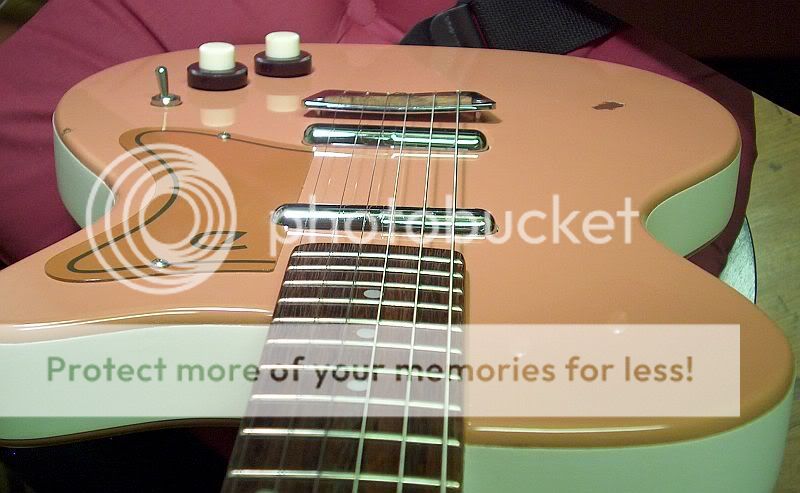Man, as if I don't already have enough sagging things...along comes this!

My beloved Dano U2 has finally succumbed to the dreaded sagging or warping bridge, apparently a common problem with these '56 reissues. It had been playing just fine until recently when I noticed a a couple of buzzing notes at the second and third fret on the D and G strings. I had a look and didn't notice anything unusual, but my local guitar guy saw a bit of a back bow in the neck and reckoned that a tweak of the truss rod would be in order.
Well, easier said than done! For those who are not aware, access to the truss rod requires removal of the neck! The nut is in the heel. (sigh)
Since the strings had to be lifted from the bridge anyway, I decided to replace the 9's that I had on it with some pure nickel 10's for a more vintage sound. Long story short, the good news is that I got rid of the first position buzzing...the bad news is that I now have buzzing around the 10th and 11th fret, still on the D & G strings!
I checked the neck again and I guess the extra tension from the heavier strings had pulled the neck up too much, so...off came the neck a second time! The neck was fine but the buzzing continued. Then I paid some attention to the bridge. It had always had a swayback to it but I thought it was just the design of the thing since the guitar was playing fine. Now I realize that the metal is collapsing (sagging) from the tension on the D and G strings! The other 4 strings are fine and do not cause buzzing.
So here's the dilemma: if I raise the bridge to clear the middle two strings then the rest of them are way too high and uncomfortable to play; if I adjust the outer strings correctly the middle two buzz at some point on the neck!
Here are a few more shots of the condition:



There is an adjustable replacement bridge available for these "vintage" designs but I'd rather keep the original design with the rosewood saddle. It does contribute quite a bit to the sound believe it or not. We A-B'd mine with a new DC59 in the music store. The metal bridge on that one does sound different.
From my "research" I understand that the famous Dan Erlewine addresses this repair in one of his DVD's, and he apparently adds another wood screw underneath to support it, after first flattening out the metal of course. I haven't been able to find out exactly how he's doing it however.
My thinking is more along the lines of some sort of telescoping or adjustable bolt of some kind. Or perhaps something very simple like a hard wood wedge?? Dunno.
Any thoughts or suggestions? Keep in mind the construction of these guitars: poplar bracing covered with Masonite! There ain't a lot of fastening points or strength. and of course you don't want to interfere too much with the vibration transmission through the bridge, that's also a factor in the sound of thees things.
Thanks for your consideration guyz!



